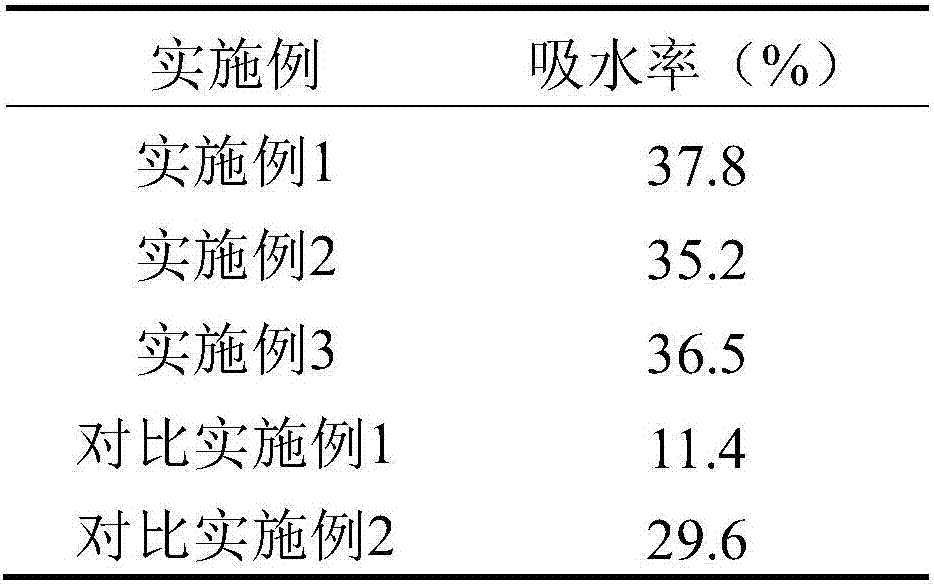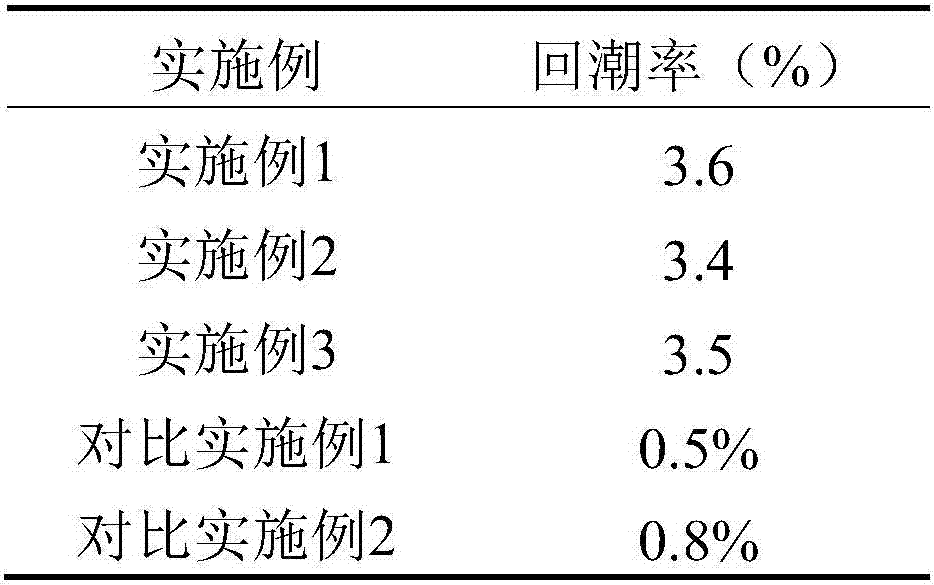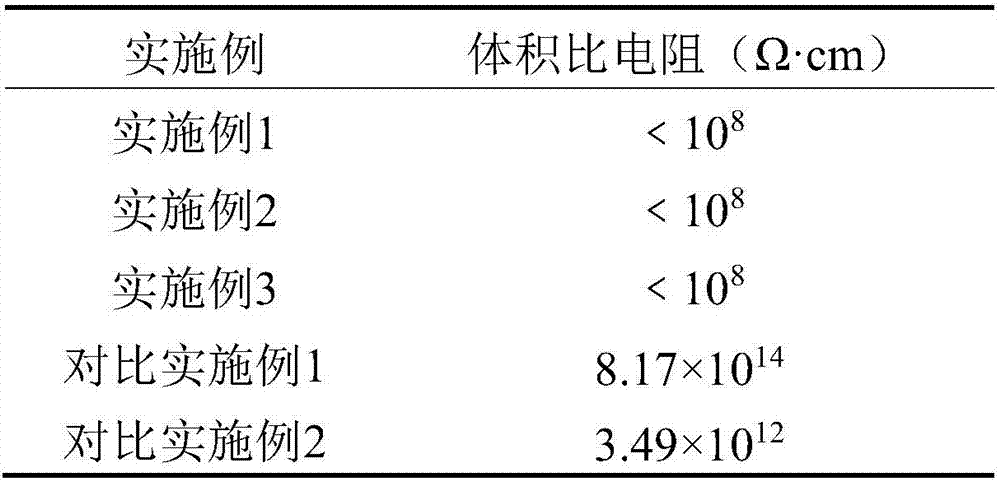Moisture-absorbing anti-static and anti-bacterial polyester fiber, moisture-absorbing anti-static and anti-bacterial fabric and preparation and application
A polyester fiber and antibacterial fabric technology, applied in the field of clothing textiles, can solve the problems of polyester fabrics such as poor air permeability, poor pilling resistance, and lack of hydrophilic structure, achieving low cost, good washing resistance, and improved comfort sexual effect
- Summary
- Abstract
- Description
- Claims
- Application Information
AI Technical Summary
Problems solved by technology
Method used
Image
Examples
Embodiment 1
[0046] A preparation method of hygroscopic antistatic antibacterial polyester fiber, comprising the steps of:
[0047] (1) Polyethylene terephthalate (PET), polyvinyl alcohol (polymerization degree 500), nano-silver (particle size 30-60nm) and polyethylene glycol 400 according to the mass ratio of 90:0.8:0.5:8 Mixing and performing melt spinning (spinning temperature 230°C, spinning speed 1200m / min) to obtain mixed fibers;
[0048] (2) Treating the mixed fiber obtained by spinning in step (1) with a lipase aqueous solution with a concentration of 4 g / L at 60° C. for 10 h;
[0049] (3) quaternary ammonium salt chitosan / glyoxal solution (concentration of glyoxal is 3% w / w, the concentration of quaternary ammonium chitosan is 3% w / w) with the mixed fiber after step (2) process ) at 70°C for 10 hours;
[0050] (4) Washing the mixed fiber treated in step (3) at 37°C for 1.2h;
[0051] (5) Stretching the mixed fiber after washing in step (4) 2.5 times, crimping, and heat-setting ...
Embodiment 2
[0054] A preparation method of hygroscopic antistatic antibacterial polyester fiber, comprising the steps of:
[0055](1) Polyethylene terephthalate (PET), polyvinyl alcohol (polymerization degree 500), nano-silver (particle size 50-100nm) and polyethylene glycol 600 according to the mass ratio of 85:0.5:0.3:5 Mixing and performing melt spinning (spinning temperature 220°C, spinning speed 1000m / min) to obtain mixed fibers;
[0056] (2) Treat the mixed fiber obtained by spinning in step (1) with a lipase aqueous solution with a concentration of 3g / L at 55°C for 16h;
[0057] (3) quaternary ammonium salt chitosan / glyoxal solution (concentration of glyoxal is 2% w / w, and quaternary ammonium chitosan concentration is 1% w / w) with the mixed fiber after step (2) process ) at 60°C for 24 hours;
[0058] (4) washing the mixed fiber treated in step (3) at 30° C. for 2 hours;
[0059] (5) Stretching the mixed fiber washed in step (4) by 2 times, crimping, and heat-setting at 130° C. ...
Embodiment 3
[0062] A preparation method of hygroscopic antistatic antibacterial polyester fiber, comprising the steps of:
[0063] (1) Polyethylene terephthalate (PET), polyvinyl alcohol (polymerization degree 500), nano-silver (particle size 20-80nm) and polyethylene glycol 400 according to the mass ratio of 100:1:0.8:10 Mixing and performing melt spinning (spinning temperature 250°C, spinning speed 1500m / min) to obtain mixed fibers;
[0064] (2) Treat the mixed fiber obtained by spinning in step (1) with a lipase aqueous solution with a concentration of 5 g / L at 65° C. for 8 hours;
[0065] (3) quaternary ammonium salt chitosan / glyoxal solution (concentration of glyoxal is 4% w / w, and quaternary ammonium chitosan concentration is 5% w / w) with the mixed fiber after step (2) process ) at 80°C for 4 hours;
[0066] (4) Washing the mixed fiber treated in step (3) at 40°C for 30 minutes;
[0067] (5) Stretching the mixed fiber after washing in step (4) 3 times, crimping, and heat setting ...
PUM
| Property | Measurement | Unit |
|---|---|---|
| particle diameter | aaaaa | aaaaa |
| glass transition temperature | aaaaa | aaaaa |
| particle diameter | aaaaa | aaaaa |
Abstract
Description
Claims
Application Information
 Login to View More
Login to View More - R&D
- Intellectual Property
- Life Sciences
- Materials
- Tech Scout
- Unparalleled Data Quality
- Higher Quality Content
- 60% Fewer Hallucinations
Browse by: Latest US Patents, China's latest patents, Technical Efficacy Thesaurus, Application Domain, Technology Topic, Popular Technical Reports.
© 2025 PatSnap. All rights reserved.Legal|Privacy policy|Modern Slavery Act Transparency Statement|Sitemap|About US| Contact US: help@patsnap.com



